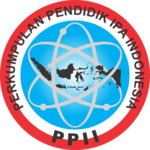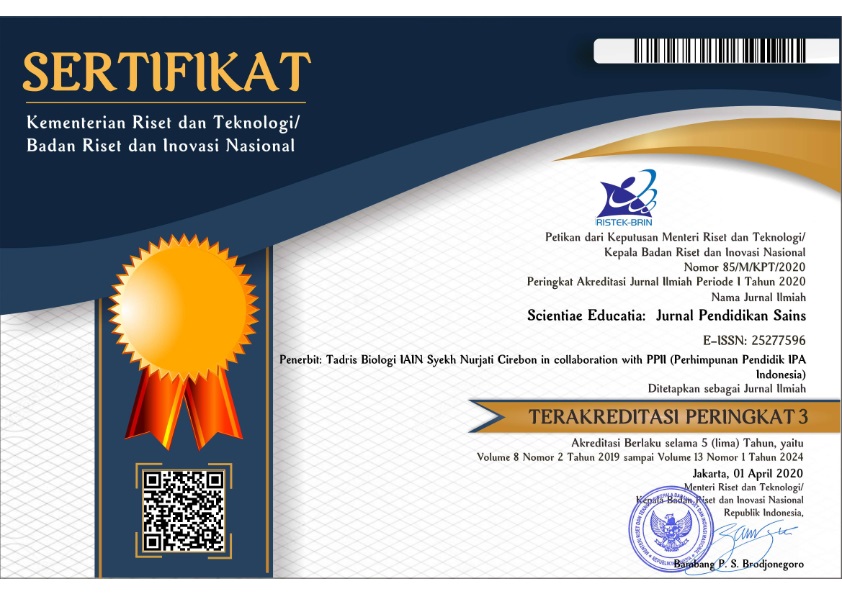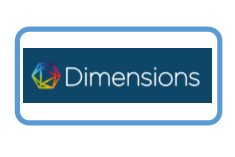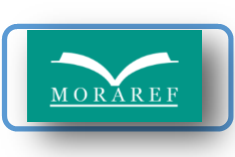Developing Flipped Classroom-based Mobile Learning Media to Teach Optical Physics
(1) Department of Optical Refraction, STIKES HAKLI Semarang
(2) Department of Informatics, STMIK Himsya Semarang
(*) Corresponding Author
Abstract
Keywords
Full Text:
PDFReferences
Asiksoy, G., & Özdamli, F. (2016). Flipped classroom adapted to the ARCS model of motivation and applied to a physics course. Eurasia Journal of Mathematics, Science and Technology Education, 12(6), 1589–1603. https://doi.org/10.12973/eurasia.2016.1251a
Astra, I. M., Nasbey, H., & Nugraha, A. (2015). Development of an Android application in the form of a simulation lab as learning media for senior high school students. EURASIA Journal of Mathematics, Science and Technology Education, 11(5), 1081–1088. https://doi.org/10.12973/eurasia.2015.1376a
Brame, C. J. (2019a). Chapter 9 - Flipping the Classroom. In C. J. B. T.-S. T. E. Brame (Ed.) (pp. 121–132), Academic Press https://doi.org/https://doi.org/10.1016/B978-0-12-814702-3.00009-3.
Can, F., Jeong, J. S., & Gonza, D. (2016). Students’ perceptions and emotions toward learning in a flipped general science classroom. Journal of Science Education and Technology, 25(5), 747–758. https://doi.org/10.1007/s10956-016-9630-8
Gilboy, M. B., Heinerichs, S., & Pazzaglia, G. (2015). Enhancing student engagement using the flipped classroom. Journal of Nutrition Education and Behavior, 47(1), 109–114. https://doi.org/10.1016/j.jneb.2014.08.008
González, M., González, M., MartÃn, M. E., Llamas, C., MartÃnez, Ó., Vegas, J., Herguedas, M., & Hernández, C. (2015). Teaching and learning physics with smartphones. Journal of Cases on Information Technology, 17(1), 31–50. https://doi.org/10.4018/JCIT.2015010103
Gross, D., Pietri, E. S., Anderson, G., Moyano-camihort, K., & Graham, M. J. (2015). increased preclass preparation underlies student outcome improvement in the flipped classroom. CBE—Life Sciences Education, 14(4), 1–8. https://doi.org/10.1187/cbe.15-02-0040.
Keskin, N. O., & Metcalf, D. (2011). The current perspectives, theories, and practices of mobile learning. Turkish Online Journal of Educational Technology-TOJET, 10(2), 202-208.
Leo, J., & Puzio, K. (2016). Flipped instruction in a high school science classroom. Journal of Science Education and Technology, 25(5), 775–781. https://doi.org/10.1007/s10956-016-9634-4
Mackinnon, G. (2015). Determining useful tools for the flipped science education classroom. Contemporary Issues in Technology and Teacher Education, 15(1), 44–55.
Mahmoud, S. T., Alshannag, Q., & Malkawi, E. (2015). Exploring the impact of iPads in teaching introductory physics courses at UAEU. The International Academic Forum, December, 1–10.
Mardiana, N., & Kuswanto, H. (2017). Android-assisted physics mobile learning to improve senior high school students’ divergent thinking skills and physics HOTS. AIP Conference Proceedings, 1868(August), 070005. https://doi.org/10.1063/1.4995181
Muyaroah, S., & Fajartia, M. (2017). Pengembangan media pembelajaran berbasis Android dengan menggunakan aplikasi Adobe Flash CS 6 pada mata pelajaran biologi. Innovative Journal of Curriculum and Educational Technology, 6(2), 22–26. https://doi.org/10.15294/ijcet.v6i2.19336
Naccarato, E., & Karakok, G. (2015). Expectations and implementations of the flipped classroom model in undergraduate mathematics courses. International Journal of Mathematical Education in Science and Technology, 46(7), 968–978. https://doi.org/10.1080/0020739X.2015.1071440
Oprea, M., & Miron, C. (2014). Mobile phones in the modern teaching of physics. Romanian Reports in Physics, 66(4), 1236–1252.
Saefi, M., Lukiati, B., & Suarsini, E. (2017). Students’ cognitive comprehension. Jurnal Pendidikan Sains, 5(2), 57–63.
Simanjuntak, B. R., & Budi, E. (2018). The development of web-based instructional media for teaching wave physics on Android Mobile. Jurnal Penelitian & Pengembangan Pendidikan Fisika, 4(1), 1–10. https://doi.org/10.21009/1.04101
Sung, Y. T., Chang, K. E., & Liu, T. C. (2016). The effects of integrating mobile devices with teaching and learning on students’ learning performance: A meta-analysis and research synthesis. Computers and Education, 94(November), 252–275. https://doi.org/10.1016/j.compedu.2015.11.008
Taufiq, M., Amalia, A. V., Parmin, P., & Leviana, A. (2016). Design of science mobile learning of eclipse phenomena with conservation insight Android-based app inventor 2. Jurnal Pendidikan IPA Indonesia, 5(2), 291–298. https://doi.org/10.15294/jpii.v5i2.7375
Touchton, M. (2015). Flipping the classroom and student performance in advanced statistics: Evidence from a quasi-experiment. Journal of Political Science Education, 11(1), 28–44. https://doi.org/10.1080/15512169.2014.985105
Vieyra, R., Vieyra, C., Jeanjacquot, P., Marti, A., & Monteiro, M. (2015). Turn your smartphone into a science laboratory. The science teacher, 82(9), 32-40. https://doi.org/10.2505/4/tst15
Zydney, J. M., & Warner, Z. (2016). Mobile Apps for science learning: Review of research. Computers and Education, 94, 1–17. https://doi.org/10.1016/j.compedu.2015.11.001
DOI: 10.24235/sc.educatia.v9i2.7254
Article Metrics
Abstract view : 1 timesPDF - 1 times
Refbacks
- There are currently no refbacks.
Scientiae Educatia: Jurnal Pendidikan Sains indexed by:

This work is licensed under a Creative Commons Attribution 4.0 International License.
Stat Counter (Link)



1.png)












